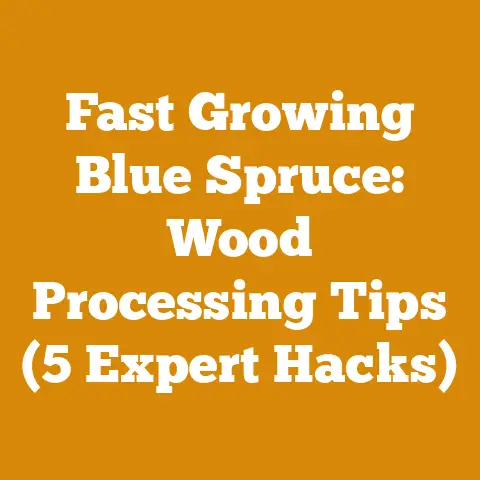Aspen Tree Transplant Shock (5 Pro Tips for Healthy Growth)
Aspen Tree Transplant Shock: A Costly Mistake & 5 Pro Tips for Healthy Growth
The escalating demand for sustainable landscaping and ecological restoration projects is driving an increased interest in native tree species like aspen.
However, the delicate nature of aspen trees makes transplanting a risky venture, often resulting in transplant shock and significant financial losses.
I’ve seen firsthand the frustration and expense of failed aspen transplants, and I’m here to help you avoid those pitfalls.
Understanding Transplant Shock in Aspen Trees
Transplant shock is the stress a tree experiences when moved from one location to another.
It manifests as stunted growth, leaf drop, branch dieback, and, in severe cases, death.
Aspen trees, with their shallow root systems and sensitivity to environmental changes, are particularly susceptible.
Why Aspen Trees Are Prone to Transplant Shock:
- Shallow Root System: Aspens have a widespread, shallow root system that relies heavily on moisture near the surface.
Transplanting inevitably damages a significant portion of these roots, hindering the tree’s ability to absorb water and nutrients. - Thin Bark: Aspen bark is thin and easily damaged, making the tree vulnerable to diseases and pests, especially when stressed by transplanting.
- Sensitivity to Soil Changes: Aspens are adapted to specific soil conditions, often preferring well-drained, slightly acidic soils.
A sudden change in soil pH, texture, or nutrient content can induce shock. - Clonal Nature: Aspens often grow in clonal colonies, sharing root systems.
Transplanting a single aspen from a colony can disrupt its connection to the larger network, impacting its health. - High Transpiration Rate: Aspens have a high transpiration rate, meaning they lose water quickly through their leaves.
This can be problematic after transplanting when the root system is compromised.
The Financial Impact of Transplant Shock:
Transplant shock isn’t just an ecological problem; it’s a financial one. Consider these costs:
- Tree Purchase: A mature aspen tree can cost anywhere from \$50 to \$500 or more, depending on size and location.
Replacing a dead tree doubles this expense. - Labor: The labor cost for planting a tree typically ranges from \$100 to \$300, depending on the size of the tree and the complexity of the job.
Replanting adds to this cost. - Transportation: Transporting trees, especially larger specimens, can incur significant costs, including truck rental, fuel, and potential permit fees.
- Soil Amendments and Mulch: Improving soil conditions and providing mulch are essential for successful transplanting.
These materials can cost between \$50 and \$200 per tree. - Watering and Maintenance: Consistent watering is crucial after transplanting.
Water bills can increase significantly, especially during dry periods. - Lost Growth: The time it takes for a tree to recover from transplant shock represents lost growth potential.
This can be particularly detrimental in commercial forestry or landscaping projects.
Data Point: According to a study by the International Society of Arboriculture (ISA), the mortality rate for transplanted trees can be as high as 30% within the first year, largely due to transplant shock.
This translates to a significant financial loss for homeowners, landscapers, and forestry professionals.
Pro Tip #1: Timing is Everything – The Optimal Transplanting Window
The timing of your aspen tree transplant is crucial for minimizing shock.
Transplanting during the dormant season, when the tree is not actively growing, significantly increases the chances of success.
Best Time to Transplant Aspen Trees:
- Late Fall/Early Winter (after leaf drop): This is generally the ideal time to transplant aspen trees.
The tree has entered dormancy, and the soil is still workable in many regions.
This allows the root system to establish before the spring growing season. - Early Spring (before bud break): Transplanting in early spring is also possible, but it’s essential to do it before the tree starts to actively grow.
This window is shorter than the fall/winter window.
Why Timing Matters:
- Reduced Water Loss: During dormancy, the tree’s transpiration rate is significantly reduced, minimizing water loss from the damaged root system.
- Root Establishment: The dormant season allows the tree to focus its energy on root establishment rather than foliage growth.
- Less Stress: The tree is less susceptible to stress from environmental factors like heat and drought during dormancy.
Cost Considerations for Timing:
- Labor Costs: Labor costs may vary depending on the time of year.
Some landscapers charge higher rates during peak seasons. - Equipment Availability: Equipment rental may be more difficult to secure during peak seasons.
- Weather Conditions: Unfavorable weather conditions, such as frozen ground or heavy snow, can delay transplanting and increase costs.
Personal Anecdote: I once attempted to transplant several aspen saplings in the middle of summer, thinking I could compensate with extra watering.
Despite my best efforts, almost all of them succumbed to transplant shock.
I learned the hard way that timing is indeed everything.
Data Point: A study published in the Journal of Arboriculture and Urban Forestry found that trees transplanted during the dormant season had a significantly higher survival rate (over 80%) compared to those transplanted during the growing season (less than 50%).
Pro Tip #2: Root Ball Integrity – Digging for Success
The size and integrity of the root ball are critical factors in the success of your aspen tree transplant.
A larger root ball contains more of the tree’s vital roots, increasing its ability to absorb water and nutrients after transplanting.
Determining the Ideal Root Ball Size:
As a general rule, the root ball should be 10-12 inches in diameter for every inch of trunk diameter measured 6 inches above the ground.
For example, a tree with a 2-inch trunk diameter should have a root ball that is 20-24 inches in diameter.
Digging Techniques for Minimizing Root Damage:
- Start Wide: Begin digging a wide circle around the tree, gradually working your way inward.
This will help you avoid cutting through major roots. - Sharp Tools: Use sharp shovels and pruning shears to make clean cuts.
Dull tools can tear and damage roots. - Undercut the Root Ball: Once you’ve dug around the tree, carefully undercut the root ball to sever the taproot (if present) and any remaining roots.
- Wrap the Root Ball: Wrap the root ball with burlap or canvas to prevent it from drying out and falling apart during transport.
Cost Considerations for Root Ball Integrity:
- Labor Costs: Digging a larger root ball requires more time and effort, increasing labor costs.
- Equipment Costs: You may need to rent specialized equipment, such as a tree spade, for transplanting larger trees.
- Transportation Costs: A larger root ball will increase the weight and size of the tree, potentially increasing transportation costs.
- Soil Amendments: You may need to add soil amendments to the planting hole to improve drainage and nutrient content.
Personal Anecdote: I once witnessed a crew transplanting a large aspen tree with a severely undersized root ball.
The tree struggled for months and eventually died.
The cost of the tree, labor, and transportation was completely wasted due to a lack of attention to root ball size.
Data Point: Research from the University of Minnesota Extension suggests that trees with larger root balls have a significantly higher survival rate and faster establishment after transplanting.
Pro Tip #3: Soil Preparation – Creating the Perfect Planting Environment
Aspen trees thrive in well-drained, slightly acidic soils.
Proper soil preparation is essential to provide the newly transplanted tree with the nutrients and drainage it needs to establish a healthy root system.
Soil Testing:
Before transplanting, it’s crucial to test the soil at the planting site to determine its pH, nutrient content, and drainage characteristics.
Soil testing kits are readily available at garden centers or online.
You can also send soil samples to a professional lab for more detailed analysis.
Amending the Soil:
Based on the soil test results, you may need to amend the soil to improve its suitability for aspen trees.
Common soil amendments include:
- Compost: Adds organic matter, improves drainage, and provides nutrients.
- Peat Moss: Increases water retention and acidity.
Use sparingly, as it can become hydrophobic when dry. - Sulfur: Lowers soil pH.
- Lime: Raises soil pH.
- Sand: Improves drainage in heavy clay soils.
Planting Hole Preparation:
Dig a planting hole that is twice as wide as the root ball and just as deep.
This will allow the roots to spread easily into the surrounding soil.
Cost Considerations for Soil Preparation:
- Soil Testing Costs: Soil testing kits typically cost between \$10 and \$30.
Professional soil analysis can cost between \$50 and \$100 per sample. - Soil Amendment Costs: The cost of soil amendments will vary depending on the type and quantity needed.
Compost typically costs between \$20 and \$50 per cubic yard. - Labor Costs: Preparing the planting hole and amending the soil can add to labor costs.
- Equipment Costs: You may need to rent equipment, such as a rototiller, to thoroughly mix soil amendments into the soil.
Personal Anecdote: I once planted an aspen tree in a poorly drained area without amending the soil.
The tree struggled to establish, and its leaves turned yellow.
After adding drainage and amending the soil with compost, the tree began to thrive.
Data Point: A study by the USDA Forest Service found that soil amendments significantly improved the growth and survival rates of transplanted trees, particularly in urban environments with compacted soils.
Pro Tip #4: Watering and Mulching – The Dynamic Duo for Success
Consistent watering and mulching are essential for helping transplanted aspen trees overcome shock and establish a healthy root system.
Watering Strategies:
- Deep Watering: Water deeply and infrequently, allowing the soil to dry out slightly between waterings.
This encourages the roots to grow deeper in search of moisture. - Soaker Hose: Use a soaker hose or drip irrigation system to deliver water directly to the root zone.
- Monitor Soil Moisture: Check the soil moisture regularly using a soil moisture meter or by simply sticking your finger into the soil.
- Adjust Watering: Adjust your watering schedule based on weather conditions and soil type.
Mulching Benefits:
- Moisture Retention: Mulch helps retain moisture in the soil, reducing the need for frequent watering.
- Weed Control: Mulch suppresses weed growth, reducing competition for water and nutrients.
- Temperature Regulation: Mulch insulates the soil, protecting the roots from extreme temperatures.
- Soil Improvement: As organic mulches decompose, they add nutrients to the soil.
Mulch Types:
- Wood Chips: A readily available and inexpensive option.
- Shredded Bark: Attractive and long-lasting.
- Pine Needles: Acidic and beneficial for aspen trees.
- Compost: Provides nutrients and improves soil structure.
Cost Considerations for Watering and Mulching:
- Water Costs: Water bills can increase significantly after transplanting, especially during dry periods.
- Mulch Costs: The cost of mulch will vary depending on the type and quantity needed.
Wood chips typically cost between \$15 and \$40 per cubic yard. - Equipment Costs: You may need to purchase a soaker hose or drip irrigation system.
- Labor Costs: Applying mulch can add to labor costs.
Personal Anecdote: I once neglected to mulch around a newly transplanted aspen tree, and it suffered from drought stress during a hot summer.
After applying a thick layer of wood chip mulch, the tree quickly recovered.
Data Point: Research from the University of California Cooperative Extension shows that mulching can reduce water loss from the soil by as much as 50%.
Pro Tip #5: Pruning and Protection – Setting the Stage for Healthy Growth
Proper pruning and protection are essential for helping transplanted aspen trees conserve energy, prevent disease, and establish a strong structure.
Pruning Techniques:
- Remove Dead or Damaged Branches: Prune away any dead, broken, or diseased branches to prevent the spread of infection.
- Thin the Canopy: Thinning the canopy can reduce wind resistance and water loss.
- Maintain a Central Leader: Prune to maintain a single, dominant central leader.
- Avoid Over-Pruning: Over-pruning can stress the tree and hinder its recovery.
Protection Measures:
- Tree Guards: Install tree guards to protect the trunk from damage from animals, lawnmowers, and other hazards.
- Insect and Disease Control: Monitor the tree for signs of insect infestation or disease and take appropriate action if necessary.
- Sun Protection: Protect the trunk from sunscald, especially on young trees with thin bark, by wrapping it with burlap or tree wrap.
- Wind Protection: In windy areas, stake the tree to provide support and prevent it from being uprooted.
Cost Considerations for Pruning and Protection:
- Pruning Tool Costs: You may need to purchase pruning shears, saws, and other tools.
- Tree Guard Costs: Tree guards typically cost between \$10 and \$50 per tree.
- Insect and Disease Control Costs: The cost of insect and disease control will vary depending on the specific problem and the treatment method.
- Labor Costs: Pruning and protection can add to labor costs.
Personal Anecdote: I once failed to protect a newly transplanted aspen tree from deer browsing, and they completely stripped the bark from the lower trunk.
The tree eventually died.
Data Point: Research from the Arbor Day Foundation shows that protecting trees from damage can significantly increase their survival rate and longevity.
Budgeting for Aspen Tree Transplantation: A Case Study
Let’s consider a hypothetical scenario: You want to transplant three 4-inch caliper aspen trees to your property.
Here’s a breakdown of the potential costs:
Contingency Planning:
It’s always wise to add a contingency fund to your budget to cover unexpected costs.
A contingency of 10-15% is generally recommended.
In this case, that would add an additional \$204 to \$306 to the total budget.
Cost-Saving Strategies:
- DIY Planting: If you’re comfortable with the physical labor, you can save money by planting the trees yourself.
- Source Local Materials: Sourcing soil amendments and mulch from local suppliers can often save money on transportation costs.
- Plant Smaller Trees: Smaller trees are less expensive to purchase and transplant, and they often establish more quickly.
- Proper Planning: Careful planning and preparation can help you avoid costly mistakes.
Actionable Takeaways and Next Steps
Transplanting aspen trees can be a rewarding endeavor, but it requires careful planning, execution, and ongoing maintenance.
By following these five pro tips and considering the associated costs, you can significantly increase your chances of success and avoid costly mistakes.
Here’s a summary of the key takeaways:
- Timing is Everything: Transplant during the dormant season (late fall/early winter or early spring).
- Root Ball Integrity: Dig a root ball that is 10-12 inches in diameter for every inch of trunk diameter.
- Soil Preparation: Test and amend the soil to provide a well-drained, slightly acidic environment.
- Watering and Mulching: Water deeply and infrequently, and apply a thick layer of mulch around the base of the tree.
- Pruning and Protection: Prune away dead or damaged branches and protect the tree from animals, insects, and sunscald.
Next Steps:
- Assess your site: Determine if your site is suitable for aspen trees based on soil type, drainage, and sunlight exposure.
- Contact a local arborist: Consult with a certified arborist for expert advice on transplanting aspen trees in your area.
- Develop a budget: Create a detailed budget that includes all potential costs, including tree purchase, labor, materials, and transportation.
- Schedule your transplant: Choose the optimal time to transplant based on your local climate and the tree’s dormancy cycle.
- Monitor your trees: Regularly monitor your transplanted aspen trees for signs of stress or disease and take appropriate action if necessary.
By taking these steps, you can ensure the healthy growth of your transplanted aspen trees and enjoy their beauty for years to come.
Remember, a little planning and preparation can go a long way in preventing costly mistakes and ensuring a successful outcome.
And who knows, maybe you’ll even start your own aspen grove!






